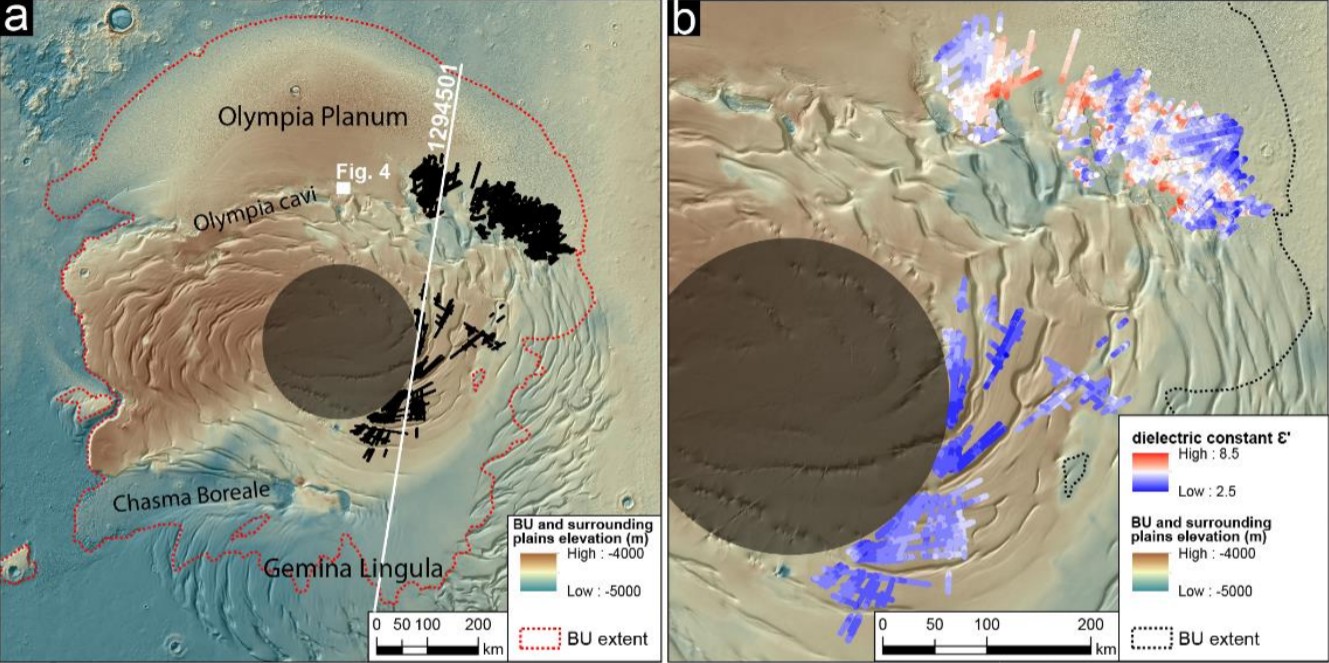The diameter of the northern polar cap of Mars is about 1 thousand km. It is formed in approximately the same way
Data from research vehicles showed that the ice cap consists of several layers - their formation began 0.5–1.5 billion years ago and they store the history of the planet over the last 100 million years.
The researchers used the data of the Mars apparatusReconnaissance Orbiter, which is able to study the surface layers at a depth of several tens of meters. The data showed that the concentration of water ice on the Olympia Plateau and in the areas closest to it reaches 62–88% of the entire contents of the cap.

If you melt all this ice, there is enough water to cover the entire surface of Mars with a layer up to 1.5 m deep, the scientists note.
Earlier, scientists were able to understand the reasons for the sharp reduction in the amount of water on Mars. The orbit of the planet plays an important role in the mechanism of water loss.